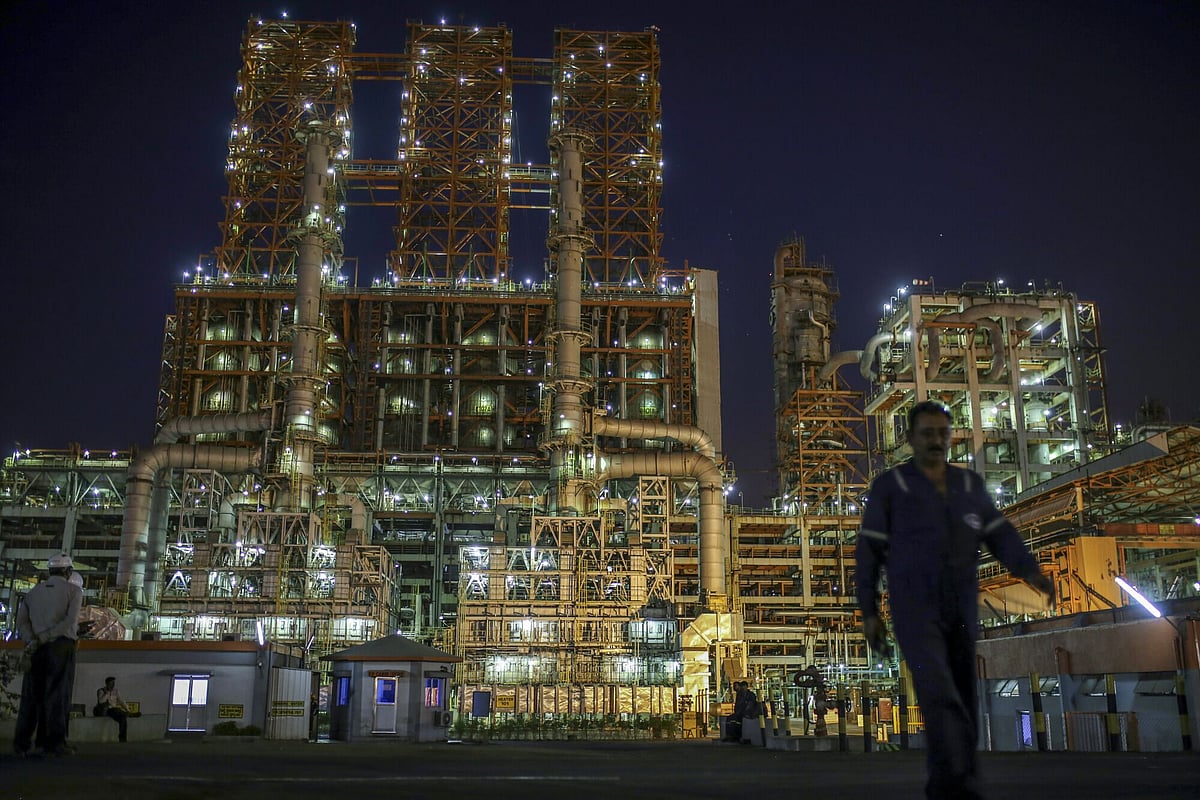Dubai: Russia’s two largest oil producers, Rosneft PJSC and Lukoil PJSC, face sweeping U.S. sanctions that put about 3.1 million barrels per day of exports at risk — nearly half of the country’s total oil shipments.
For Indian refiners, this marks a substantial challenge. India imported about 1.7 million bpd of Russian crude in the first nine months of 2025. Private refiners such as Reliance Industries Ltd., which has a term supply deal with Rosneft, now weigh a supply shock.
US sanctions include an asset freeze and transaction ban applicable to Rosneft and Lukoil, with a compliance wind-down period set for November 21, 2025. Foreign institutions that maintain dealings with these companies face potential secondary sanctions.
The sanctions have already spurred a projection of higher global crude prices. Benchmark Brent crude rose by around 3–4 % following the announcement.
Indian refiners hit
India’s dependence on imported crude remains high, with the country consuming about 4.84 million barrels per day in 2024 and importing most of it. Russian crude had become particularly attractive to Indian refiners after Moscow began offering steep discounts following its 2022 invasion of Ukraine, leading to a rapid rise in India’s oil imports from Russia from almost nothing before 2022 to record levels in recent years.
The new U.S. sanctions now threaten to disrupt those flows. Reliance Industries, India’s largest private refiner, has a long-term supply deal with Rosneft for up to 500,000 barrels per day, a contract that could be affected by the restrictions. State-run refiners such as Indian Oil Corporation, Bharat Petroleum, and Hindustan Petroleum are also examining whether their ongoing purchases involve Rosneft or Lukoil to ensure compliance.
If Russian supplies drop significantly, Indian refiners will be forced to turn to alternative sources—most likely in the Middle East or Africa. Those grades, however, could be more expensive and may require technical adjustments in refining configurations, adding both cost and complexity to India’s energy security planning.
Behind the numbers
Rosneft produced approximately 3.3 million bpd of crude oil and condensate in 2024 — roughly 31 % of Russia’s total production. Lukoil contributed about 1.6 million bpd, or 15 % of Russia’s output. Together, the two export about 3.1 million bpd.
Given that global liquid fuel production runs around 105–108 million bpd, a combined export flow of 3.1 million bpd equals roughly 2.9 % to 3.1 % of global supply — a meaningful figure in global commodity markets.
Because supply is concentrated in just two firms from one country, any disruption quickly sends shockwaves through the market. The removal of even a few million barrels per day can immediately push prices higher. With so few major suppliers, the concentration also gives these players greater leverage, making global oil markets more vulnerable to policy or political shifts.
Wider implications?
1. Global crude market tightening
With Russian supply facing constraints, crude markets may tighten. The price bounce after the sanctions suggests traders anticipate reduced flows.
2. Indian refiners face strategic choices
Industry executives told Bloomberg that Indian refiners may cut or halt direct purchases from Rosneft and Lukoil to avoid secondary sanctions, or instead route cargoes through intermediaries — an option that could drive up costs and complicate logistics. Refining margins could also weaken if substitute crude grades prove costlier or less compatible with existing refining configurations.
3. Shift in supplier geography
With Russia under increasing pressure, India may tilt back toward OPEC+ or Middle Eastern suppliers, according to estimates from Kpler and Reuters tracking recent import trends.Data from early 2025 show OPEC’s share in India’s imports rising to 51.5 % with Russia holding about 36%.
4. Geopolitical ripple effects
India now finds itself at the intersection of U.S. trade policy and Russian supply ties, according to trade analysts cited by Reuters. U.S. tariffs and the threat of secondary sanctions loom large as ongoing trade negotiations with Washington progress.
China too is facing pressure, with the sanctions sending a clear message about access to the U.S. financial system for entities that continue transactions with the sanctioned Russian oil majors, as reported by Bloomberg.
What to watch for
In the coming weeks, Indian refiners will need to review all contracts linked to Rosneft and Lukoil and complete any required wind-downs before the November 21 compliance deadline, as stipulated by the U.S.
Treasury’s Office of Foreign Assets Control (OFAC). They will also have to rapidly secure alternate crude sources to maintain steady refinery operations, ensuring both adequate volumes and technical compatibility.
Energy analysts also noted that close monitoring of shipping routes, insurance channels, and financing networks will be crucial, given their exposure to secondary sanctions. Global oil prices are expected to remain elevated — or rise further — if alternative supplies fail to compensate for reduced Russian exports, according to Bloomberg market data.
For those tracking the business and energy landscape: keep an eye on Indian crude import data, refining margin announcements, and how Indian refiners disclose shifts in supply. The current sanctions mark a pivot point in the global oil supply chain — and Indian refiners stand in the middle of it.
Sign up for the Daily Briefing
Get the latest news and updates straight to your inbox
Network Links
GN StoreDownload our app
© Al Nisr Publishing LLC 2025. All rights reserved.

